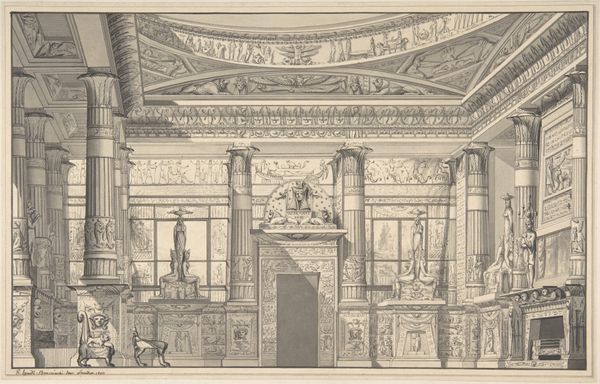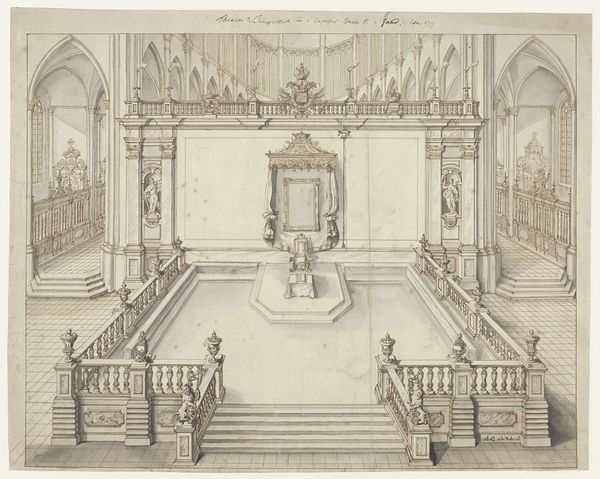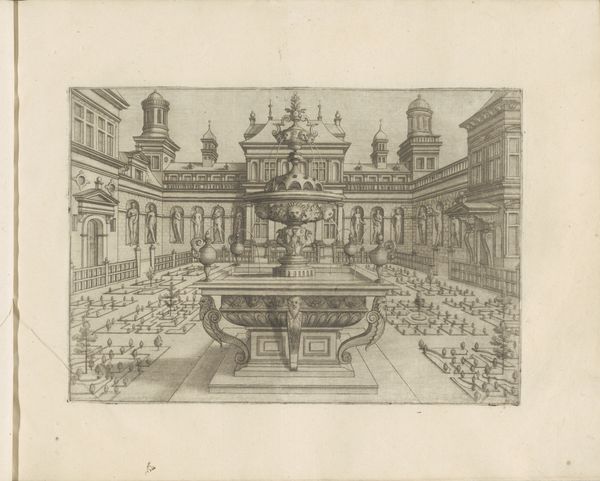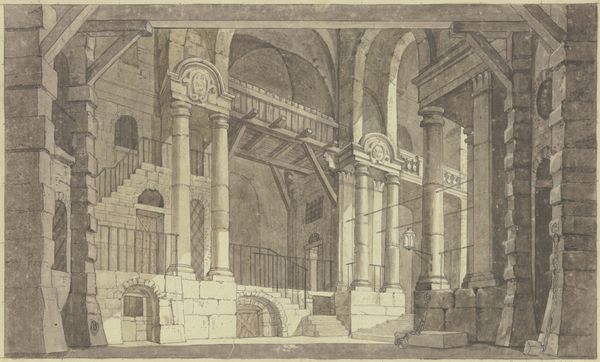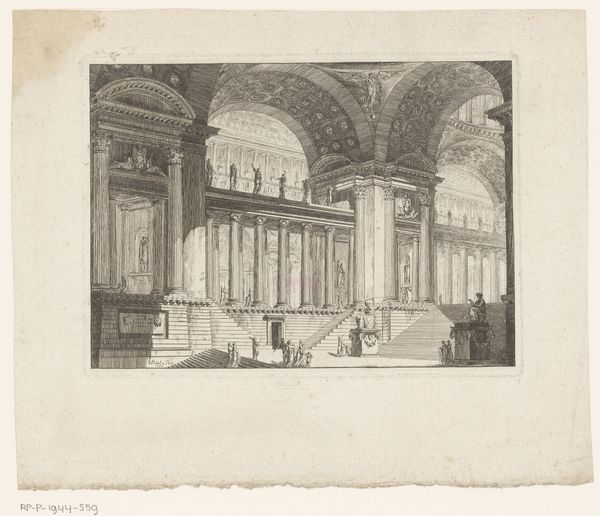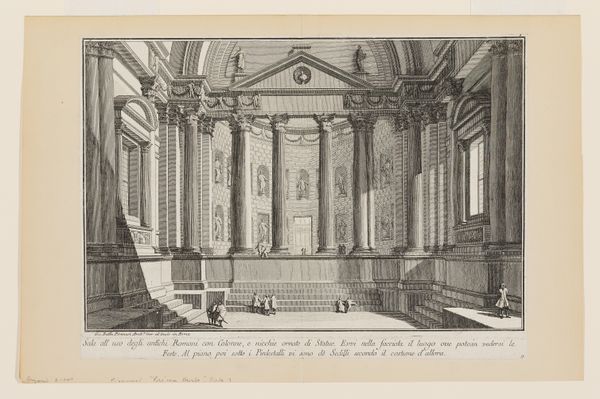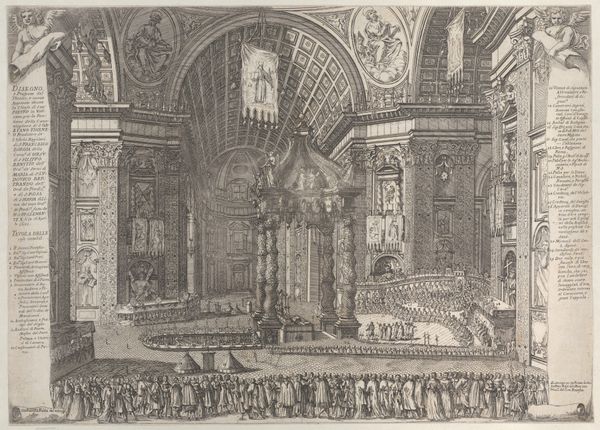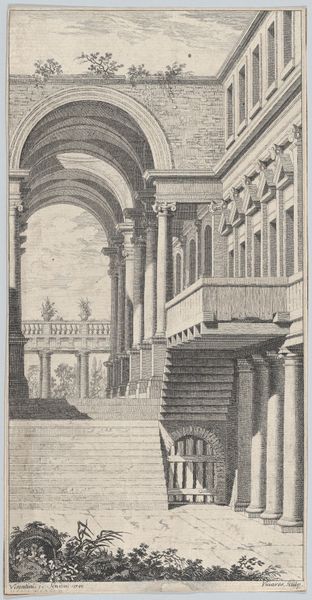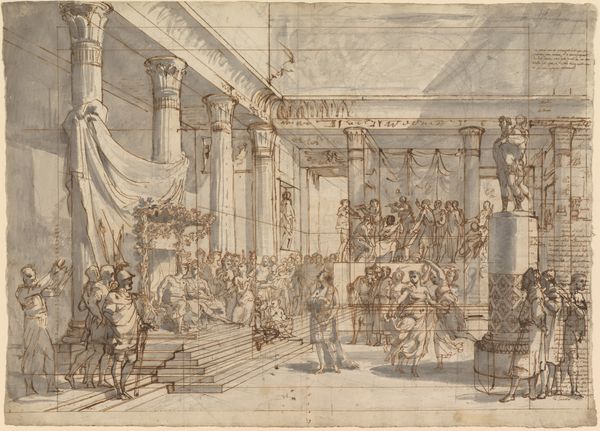
Interior of a Classical Building Showing People Engaged in Conversation 1700 - 1737
0:00
0:00
drawing, print, engraving
#
drawing
#
narrative-art
#
baroque
#
pen drawing
# print
#
pen sketch
#
pencil sketch
#
perspective
#
form
#
column
#
line
#
cityscape
#
genre-painting
#
academic-art
#
italian-renaissance
#
engraving
#
building
Dimensions: plate: 6 5/16 x 9 5/8 in. (16 x 24.5 cm) sheet: 6 9/16 x 9 13/16 in. (16.6 x 25 cm)
Copyright: Public Domain
Curator: This drawing, "Interior of a Classical Building Showing People Engaged in Conversation" by Pietro Francesco Prina, dating from 1700 to 1737, invites us to observe the staged dialogues in Early Modern Europe. What captures your immediate attention here? Editor: The architectural space dominates, absolutely. The linear quality—those precise lines scratching the surface of this print medium—creates a sense of formality, almost theatricality. It's so rigidly constructed. Curator: Precisely. Prina masterfully employs one-point perspective. Note how the orthogonals converge to a vanishing point, reinforcing the rational structure. Consider the way that creates a sense of controlled space for the aristocratic class to engage. Editor: What interests me are the figures placed within this architecture. Are they engaging in conversations or performing a choreographed social activity? The making of prints like this was so integral to circulating knowledge in the early modern world. How did this social world rely on craft? Curator: Interesting point. The very act of engraving demanded precision, the tools, the knowledge required… and in turn, such imagery constructs its own perspective for what high society must convey and accomplish. It's almost like the artist uses structural balance and line to set forth codes, power, social, performativity, even narrative, which reflects that society in itself. Editor: So, is the artist complicit? Does Prina merely reinforce class division and decorum with such attention to these architectural details and the way the upper class populates those constructed stages? Or does the laborious act of carving into copper a critical engagement through materials? The labor itself offers value. Curator: Whether celebratory or subtly critical, the drawing compels us to decode the performance staged within these grand halls and consider the language of Baroque form, a language the elite meticulously cultivated to underscore its authority. Editor: It's in that careful arrangement and circulation that the artist is able to ask if these tools and structures are not merely symbolic but are integral to producing certain knowledge, class, and division.
Comments
No comments
Be the first to comment and join the conversation on the ultimate creative platform.

